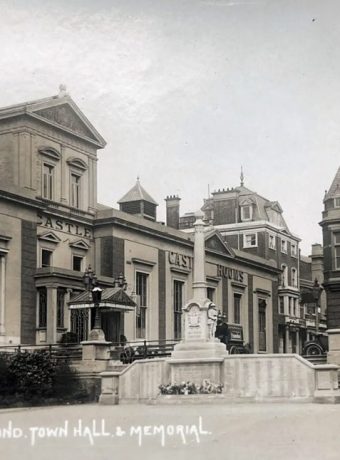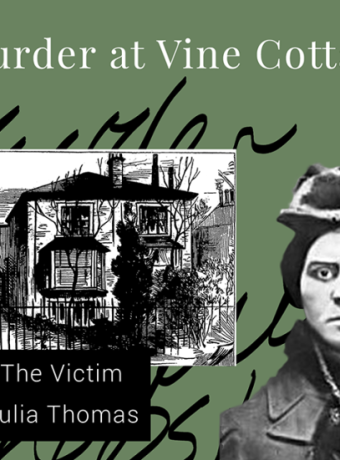Maids of Honour Row: Queen Caroline’s Elegant Legacy on Richmond Green
On the edge of Richmond Green stands a quietly splendid early Georgian terrace, built in 1724 for one of Britain’s most intellectually impressive and quietly formidable queens—Caroline of Ansbach, wife of George II.
Caroline was no ordinary consort. Popular with the public and widely respected for her intellect, she navigated a court seething with intrigue and family strife. Her life, like many royal women before and after her, was marked by personal tragedy—but she also helped shape the nation’s cultural and scientific identity, becoming a little-known champion of early vaccination over 300 years ago.
From Palace Ruins to Royal Residences
By the early 18th century, Richmond Palace was a romantic ruin, its glory days long behind it. In 1724, what remained of the palace buildings facing Richmond Green was swept away to make space for a new royal project—Maids of Honour Row.
This elegant terrace of four three-storey, five-window houses was commissioned for Caroline’s ladies-in-waiting during her tenure as Princess of Wales. Originally, three houses were planned to accommodate her six maids. For reasons lost to history, a fourth was added, creating the set of properties now known as Nos. 1–4 Maids of Honour Row.
Decades later, the original palace tower behind No.1 was annexed and connected via covered passageways, offering a ghostly architectural nod to the site’s Tudor past.
A Queen in Exile—and in Earnest
Caroline and George Augustus (later George II) arrived in England from Hanover in 1714, following the coronation of George I. The couple brought two daughters with them, but controversially left their eldest son, Frederick, behind to continue his education in Germany—an absence that would sow bitterness in years to come.
Determined to make their mark in their new country, the pair learned English, adopted British customs, and deliberately favoured English courtiers over German ones. These choices endeared them to the public but set them at odds with George I.
By 1717, tensions had reached boiling point. A furious row over the godparents of their newborn child resulted in George I placing Caroline and her husband under house arrest and banishing them from court. He even seized custody of their children, refusing the couple access—a brutal blow for Caroline, who had already lost one child to stillbirth.
In a devastating twist, one of her sons later fell gravely ill and died while in the King’s care. An autopsy was ordered to prove illness rather than grief had been the cause. Then, in 1718, while staying at Richmond Lodge, Caroline miscarried during a violent storm. Despite this string of heartbreaks, she and George went on to raise seven surviving children.
Patron of the Arts—and Pioneering Science
Caroline wasn’t just clever—she was cultured, curious, and considerably more intellectually engaged than her husband. She made Richmond Lodge a haven for learning and landscape design, pouring energy into grand garden schemes. At Leicester House—their London base in what is now Leicester Square—she hosted leading minds of the day and struck up a powerful alliance with future Prime Minister Robert Walpole.
Ever the pragmatist, Caroline supported Walpole’s attempts to reconcile the royal family, hoping for the return of her three eldest daughters from George I’s custody. But the King remained unmoved.
Caroline’s marriage, by Georgian standards, was a success. She tolerated George’s mistresses without public complaint, famously keeping her enemies close by appointing them to court roles. Henrietta Howard, one such mistress, lived at nearby Marble Hill House and served as both Lady of the Bedchamber and Lady of the Robe.
In 1727, Caroline became Queen Consort when George ascended the throne. Far from a ceremonial figurehead, she was entrusted with regency powers during his absences in Hanover, proving herself an able and shrewd political operator. Voltaire himself praised her as “a benevolent philosopher”, admiring her thirst for knowledge and deep humanity.
Her support for science was not symbolic. Caroline was a key figure in the early promotion of variolation, an experimental form of immunisation against smallpox. Working with pioneering scientists, she sanctioned trials on condemned prisoners and, satisfied with the results, had her own children inoculated decades before Edward Jenner’s more famous vaccine.
The Final Years
By 1734, none of Caroline’s ladies-in-waiting lived at Maids of Honour Row, with all four properties privately let. But the Queen’s own family life remained fraught. In later years, tensions with her estranged son Frederick (the same child left behind in Hanover) mirrored the earlier generational clash with George I.
Caroline died in 1737 at the age of 54 at St James’s Palace, her health worn down by years of stress and sorrow. Yet she left behind a legacy of learning, benevolence and quiet rebellion—evident still in the red-bricked grace of Maids of Honour Row and the progressive ideas she helped nurture.
Key Facts:
Maids of Honour Row was built in 1724 for Queen Caroline’s ladies-in-waiting on the site of the decaying Richmond Palace.
• Caroline was one of the first royals to support smallpox inoculation, testing it on prisoners, then her children.
• She endured house arrest, family estrangement, and personal tragedy, yet still emerged as one of Britain’s most respected and progressive queens.
• Her husband’s mistress, Henrietta Howard, lived nearby at Marble Hill House, and was one of Caroline’s own ladies-in-waiting.
• Voltaire called her “a benevolent philosopher” and admired her passion for learning.



